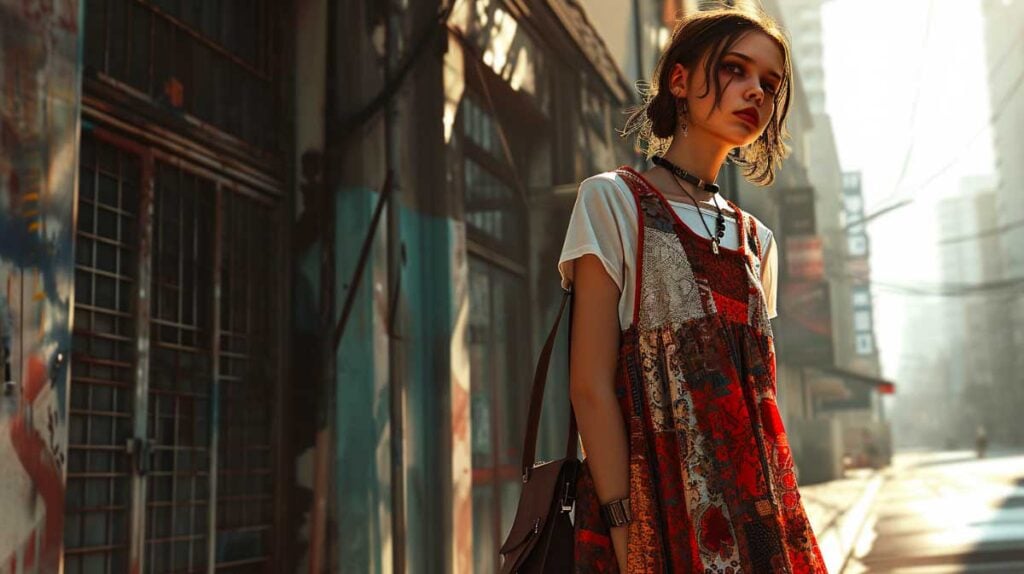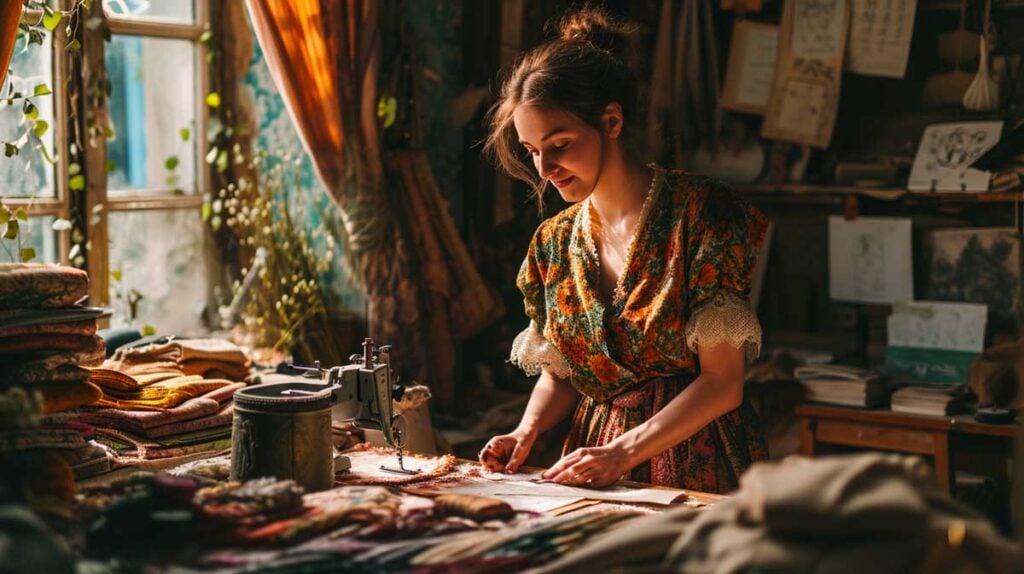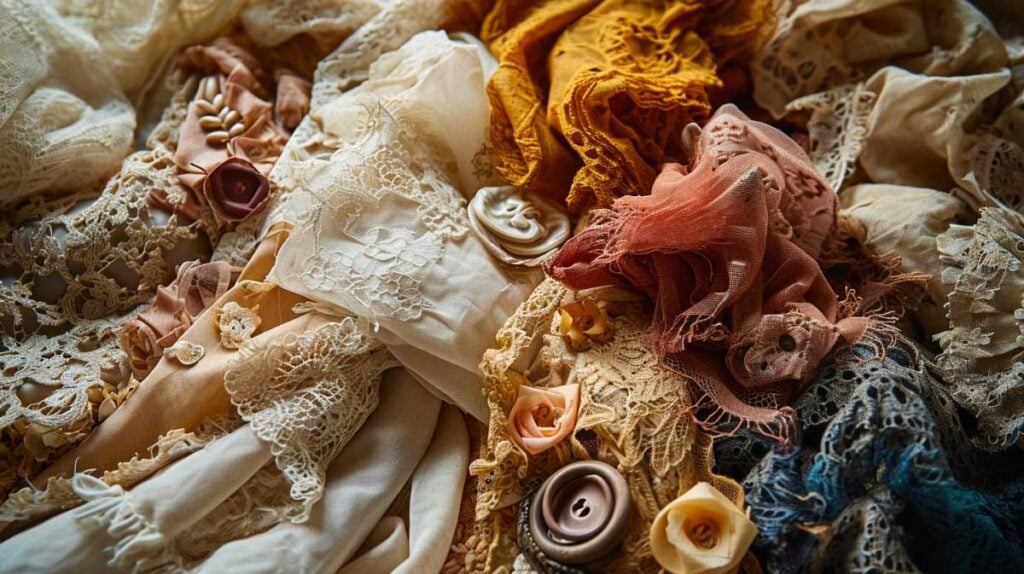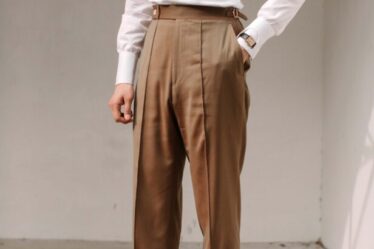
Reclamation dresses breathe new life into discarded and vintage materials. They reconstruct them into wearable, eco-conscious garments. Consumers are choosing more sustainable fashion. Reworked and upcycled pieces reduce waste. They also allow creativity and self-expression.
This post will explore the origins of reclamation dresses. It will cover how they are made. It will also include the benefits of reclamation fashion. It will also have styling tips. It will include information on where to shop for these one-of-a-kind creations. Read on to learn more about this innovative apparel movement!
The Origins of Reclamation Fashion

Reclamation fashion originated as a way to reuse and repurpose vintage or antique materials. It gives them new life and honors cultural heritage.
The sustainable practice has roots throughout human history. It has gained prominence recently as designers aim to promote environmentalism and preserve cultural significances through fashion.
For example, Polynesian designers are reclaiming traditional Aloha shirts. Bolivian women are reclaiming the indigenous cholita style.
Reclamation fashion embraces culturally significant clothes and accessories as a sustainable alternative that reduces waste while celebrating heritage.
Reclamation fashion came into prominence in the 1960s and 70s. It was alongside emerging environmentalism and anti-consumerism ideals.
Designers like Ossie Clark became known for “taking scissors to vintage dresses.” They reworked fabrics into new shapes and silhouettes.
Key early reclamation designers include:
- Ossie Clark – Used vintage fabrics like silk scarves for reconstructed pieces.
- Vivienne Westwood – Famous for transforming clothes into punk-inspired fashion.
- Mariano Fortuny – Created pleated silk dresses from recycled materials.
Reclamation allowed fabrics to live on past their original lifespan. It fit with the cultural shift away from conformity toward more expressive fashion.
How Reclamation Dresses Are Made


Specific details are limited. Reclamation dresses appear to be custom-made, primarily using vintage and antique lace fabrics. The focus is on repurposing quality materials.
This honors the heritage and craftsmanship invested in them over time. Reclamation aims to establish connections with each customer. They design special dresses at affordable prices.
The reconstructed lace dresses can be shipped worldwide. This makes these sustainable fashions accessible to a broad audience. Overall, reclaiming vintage lace allows the beauty of these textiles to live on in new forms.
Reclamation designers source discarded materials from:
- Thrift stores
- Yard sales
- Vintage shops
- Remnant fabrics from factories
They deconstruct garments, keeping elements like:
- Lace
- Buttons
- Embellishments
Then reconstruct fabrics into new dresses, tops, skirts using techniques like:
- Quilting scraps together
- Dyeing or printing on fabric
- Embellishing with beads, trim, or applique
The reconstruction process involves creativity and problem solving. But the result is renewed life for neglected fabrics.
Unique Benefits of Reclamation Fashion


Reclamation fashion, which includes practices like upcycling and buying secondhand clothing, offers many advantages:
Reduced Waste
Giving used fabrics new life keeps them from landfills. Reclamation is the ultimate form of recycling.
New Design Possibilities
Experimenting with reconstructing materials allows endless creativity. Designers can incorporate vintage elements into modern looks.
One-of-a-Kind Pieces
No two reclamation garments will ever be exactly the same. Each one features the fabrics’ unique histories.
Breathing New Life into the Old
Pieces that have been sitting in thrift stores get reimagined. A tattered wedding dress becomes a floaty sundress. Heavy velvet curtains turn into a striking maxi skirt. Reclamation allows pre-loved materials to become beautiful again.
Reclamation fashion not only offers unique and creative clothing options but also contributes to environmental sustainability, cost-effectiveness, and support for small businesses and artisans.
Styling Tips for Reclamation Dresses
Reclamation dresses come in diverse silhouettes, from ballgowns to lace minis. Pair reworked vintage styles with modern basics, like simple tanks and tees, to let the unique fabrics shine and complete the look.
Edgy accessories, layers like kimonos or leather jackets, and casual footwear like sneakers or boots perfectly complement reconstructed dresses.
Take care when cleaning delicate fabrics. Hand wash or dry clean only to maintain the integrity of the repurposed textiles. Follow these tips to accentuate the creativity and individuality of reclamation fashion.
Reclamation fashion pairs perfectly with:
- Modern basics – Try a reconstructed maxi dress with simple tanks, tees, or bodysuits.
- Edgy accessories – Funky jewelry, bags, and shoes complement reworked vintage styles.
- Layers – Cardigans, kimonos, or leather jackets add extra interest over reclamation dresses.
- Boots or sneakers – Ground reworked dresses with casual footwear.
- Choose ballgown silhouettes that comfortably drape over your legs.
- Avoid tight mermaid or trumpet gowns.
- Select lightweight gauze, crepe, or polyester fabrics if the weather is hot
- Choose long sleeves and knits if it’s cold out.
- Subtly contrasting patterns like cream on dusty rose are ideal for maternity sessions.
- To add texture and elegance, incorporate gauzy, crepe or lace fabrics.
- For non-traditional couples, consider unconventional options like jumpsuits.
- Get creative. Mix and match dresses or vintage lace to design a personalized look.
Take care when cleaning delicate reconstructed fabrics. Hand wash or dry clean only.
Differences Between Reclamation Fashion and Sustainable Fashion


While related, reclamation and sustainable fashion have distinct focuses.
Reclamation fashion repurposes used or deadstock materials into new garments. It reduces waste through creative upcycling. It is a subset of the broader sustainable fashion movement.
Sustainable fashion aims to mitigate environmental and social impacts across the entire apparel lifecycle. This includes design, production, use, and disposal. It encompasses various initiatives like eco-materials, recycling, and worker welfare. It’s not just repurposing existing items.
In short, reclamation fashion revolves around reusing materials through repurposing, while sustainable fashion represents comprehensive efforts to address fashion’s sustainability challenges.
Discover and shop guilt-free fashion with these top 8 ethical clothing brands committed to sustainability.
Where to Buy Reclamation Fashion
Many designers now specialize in reclamation fashion. Look for reconstructed dresses at:
- Etsy – Search for “upcycled dress”
- Vonlin – Custom reconstructed vintage
- Elise and Maude – Reclamation studio in Australia
- Franklin and Emily – Repurposed fabrics
- Beyond Retro – Vintage and reworked fashion
You can also find secondhand pieces at thrift stores to reconstruct yourself.
Check out garment recycling programs like For Days and FabScrap. They supply discarded materials to designers.
The Price Range for Reclamation Fashion
The price range for Reclamation fashion varies depending on the dress and the seller. According to their official website, the dresses are made with all the purpose, intention, and meaning in the world.
They ship worldwide to all free-spirited hearts across the globe. On their Etsy shop, the prices range from $12.50 to $356, with most dresses priced between $200 and $350. According to a third-party website, the price for a Reclamation dress starts at $1,050.
Conclusion
Reclamation dresses allow pre-loved fabrics to be reimagined into sustainably-produced fashion. With creativity and craftsmanship, discarded materials are given new life and purpose. The next time you shop for a special dress, consider choosing a one-of-a-kind reclamation garment.
Loved learning about reclamation fashion? Share your thoughts on giving new life to vintage fabrics and repurposed style. Join the conversation in the comments below!
Image Credits: Blufashion.com




